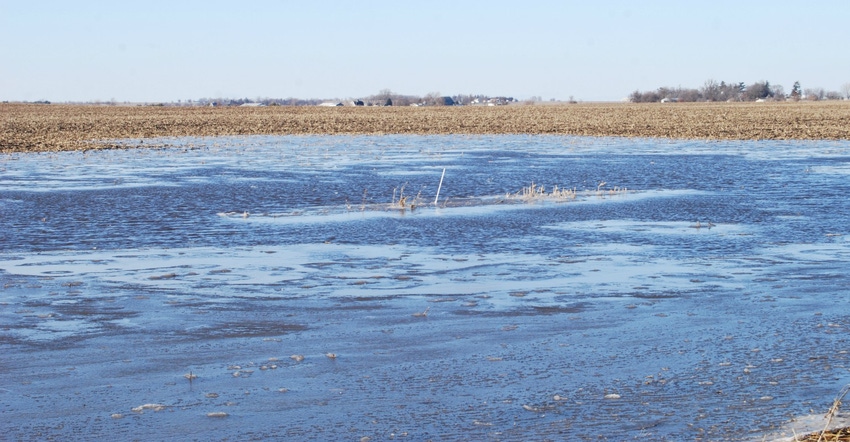April 9, 2019

Farmers have 2% of the nation’s 2019 corn crop planted, according to USDA’s weekly Crop Progress & Weather Report issued April 8. None of that corn was planted yet in Iowa, which is still rather wet statewide. There are, however, some areas of Iowa beginning to get dry enough for nitrogen application.
Anhydrous ammonia was being applied in a few fields in southeast and east-central Iowa during the final days of the week ending April 7. Several tractors were in fields near Iowa City pulling anhydrous applicators, knifing in nitrogen on April 8. There was also manure being applied and some dry fertilizer in the past few days.
"The recent warming trend has helped green up cover crops in some parts of the state, which is a sure sign of spring," notes Iowa Secretary of Agriculture Mike Naig. "The forecast shows a chance of mixed precipitation over the next few days, so widespread fieldwork across Iowa is still likely a few weeks out."
The complete weekly Iowa Crop Progress & Weather Report is at iowaagriculture.gov and at nass.usda.gov/ia.
Crop report
Cool temperatures and rain throughout Iowa kept fields from drying out enough for fieldwork during the week ending April 7, according to the weekly survey report, issued by the Iowa office of USDA’s National Ag Statistics Service.
Statewide there was just 0.8 day suitable for fieldwork. Fieldwork activities were limited, with some farmers spreading manure and applying dry fertilizer on fields able to support the equipment. Topsoil moisture rated 0% very short, 0% short, 44% adequate and 56% surplus. Subsoil moisture rated 0% very short, 0% short, 46% adequate and 54% surplus.
Statewide, 2% of the state’s 2019 oats crop has been planted, nine days behind the five-year average and nearly a week behind last year. This is the smallest percentage planted by this time since 2008. Cover crops and hay fields continue to get green as warmer temperatures have induced growth. Livestock and feedlot conditions have improved, but cattle feedlots remain muddy.
Weather summary
According to IDALS climatologist Justin Glisan, April’s first week was wetter than normal across Iowa’s northwest quadrant, with the rest of state experiencing unseasonably dry conditions. Measurable rain was reported every day somewhere in the state.
Temperatures were generally above average by 2 to 3 degrees, though cooler in the southeast corner for the week ending April 7. A series of weak cold fronts moved through Iowa at the beginning of the week, the first of which occurred late April 1 into the morning of April 2.
Much of Iowa saw measurable rain from another front passing through April 3. Rain totals through 7 a.m. April 4 were above 1 inch at eight stations in northwest Iowa; Storm Lake (Buena Vista County) reported 1.73 inches.
Daytime temperatures cooled into the mid-40s across northern Iowa. April 5 was warm, with highs in the upper 50s and lower 60s. Rain fell across northern Iowa overnight into April 6, which was the week’s warmest day. Highs were 15 to 20 degrees warmer than average, reaching into the upper 70s in southern Iowa.
A low-pressure system moved through Iowa the night of April 6 into April 7, and Dubuque reported 0.75 inch of rain. Thunderstorms re-formed in eastern Iowa on the evening of April 7. Preliminary rainfall totals for the week averaged 0.54 inch, while normal is 0.65 inch.
Atlantic (Cass County) and Sac City (Sac County) observed the week’s high of 78 degrees F on April 6, an average of 20 degrees above normal. Denison (Crawford County) and Little Sioux (Harrison County) reported a low of 16 degrees on April 1, which was 15 degrees below average. Orange City (Sioux County) reported the highest rainfall total of the week at 2.35 inches.
Four-inch soil temperatures have warmed into the mid to upper 50s across the southern two-thirds of Iowa as of April 8; soil temperatures in northern Iowa are ranging in the upper 40s and lower 50s.
About the Author(s)
You May Also Like






